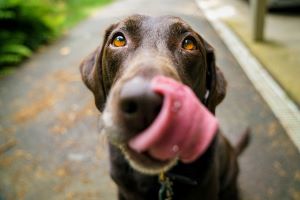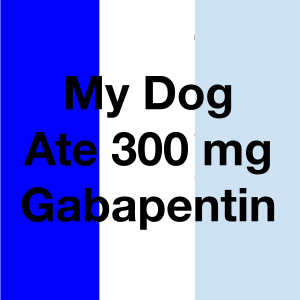
Any pet parent has had to deal with their faithful companion having a bout of diarrhea or a runny nose.
When they occur separately, they’re not much of a problem.
However, when a dog exhibits both symptoms at the same time most pet owners start to worry.
When a dog has a runny nose and loose stools at the same time there may be something seriously wrong with him.
There’s always the chance that it’s just a coincidence, but as a responsible pet parent, you need to assume the worst and hope for the best.
At the very least, you should speak to your vet as these two symptoms present at the same time may be a sign that your dog has a very serious, often fatal disease called canine distemper.
Or he may be infected with some type of coronavirus.
Not to be confused with Covid!
What is canine distemper?
Canine distemper is a highly contagious disease caused by a virus that attacks a dog’s main systems – the respiratory system, the digestive system, and the central nervous system. This disease is more common among puppies under the age of four months who are not yet fully vaccinated or among adult dogs who are not vaccinated or have not had their booster shots.
Unfortunately, there is no treatment for canine distemper. The disease will run its course and a healthy adult dog may have a chance to beat it. Many dogs don’t make it.
The canine distemper virus can also be found in wildlife such as foxes, wolves, coyotes, raccoons, skunks, and ferrets and has been reported in lions, tigers, leopards, and other wild cats.
What are the symptoms of canine distemper?
A dog may become infected with the canine distemper virus through airborne exposure (sneezing or coughing) or shared food and water bowls. A pregnant dog can pass the virus to her puppies through the placenta. One of the main problems is that an infected dog can start shedding the virus even before symptoms appear. It may continue to do so for months if he is lucky enough to survive.
Watery eyes and a runny nose are often the first symptoms to appear. Soon enough, the dog may experience more serious problems.
Here are the most common symptoms of canine distemper:
- Fever
- Diarrhea
- Vomiting
- Reduced appetite
- Head tilt
- Muscle twitches
- Lethargy
- Convulsions
- Seizures paralysis
Keep in mind that the dog may not have all the symptoms and there is no particular order in which they appear. Perhaps the most distinctive symptom of canine distemper is the so-called ‘chewing gum fit”. This is a type of convulsion accompanied by jaw chewing movements and excessive drooling. The virus may also cause the footpads to thicken and harden, which is why canine distemper is sometimes referred to as “hard pad disease.”
How is canine distemper diagnosed?
If you notice worrying symptoms, take the dog to the vet right away. The doctor will probably order a blood test to detect the viral infection. In severe cases, the disease can be diagnosed by the clinical appearance.
There is very little the vet can do since there is no cure for canine distemper. However, the vet can provide supportive care, giving the dog a chance to fight the disease. For instance, the doctor can prescribe meds to try and stop the digestive symptoms and administer fluids to combat dehydration.
A dog with canine distemper must be kept separately from other animals to prevent spreading the disease. At the same time, this will keep the dog from getting a secondary infection. Bacterial infections are quite common in dogs with canine distemper as the dog’s immune system is already overwhelmed by the viral infection. If the dog gets a bacterial infection, the vet will put him on antibiotics, which, sadly, do not work against viruses.
Even if the dog survives there’s a risk he will have serious neurological problems.
Canine Distemper Vaccination
The only way to protect your dog against canine distemper is to vaccinate him. In most American states, this vaccine is required by law, but in many European countries, including the UK, such vaccines are not mandatory.
Immunization against canine distemper is part of a combination vaccination, known as DHLPP. This five-way vaccine also protects against hepatitis (adenovirus), leptospirosis, parvovirus (another deadly disease in dogs), and parainfluenza. Other combined vaccines which protect dogs against canine distemper include DHPP, DAPP, and DA2PP,
Puppies should receive their first DHLPP shot at six weeks, then every two to four weeks until 16 weeks of age. Dogs can also have a booster shot at 12 months and then every three years.
The price for a combination vaccine varies from $7 to $32 on average.
What is canine coronavirus?
Canine coronavirus is another highly infectious disease affecting dogs all over the world. Canine coronaviruses are different from the SARS-Cov2 responsible for the Covid-19 pandemic and they are not transmissible to humans.
There are two main types of canine coronavirus: enteric and respiratory.
- Enteric canine coronavirus affects the dog’s gastrointestinal tract and can be spread through feces. Dogs infected with this type of virus can display clinical symptoms similar to any gastrointestinal upset, such as vomiting, diarrhea, and lethargy.
- Respiratory canine coronavirus (CRCoV) is spread through the air and attacks the lungs. Symptoms include runny nose, coughing, sneezing, and difficulty breathing.
Most cases of canine coronavirus often cause mild symptoms or no symptoms at all, but, under certain circumstances, the disease can be fatal.
What is canine infectious respiratory disease?
A dog infected with a canine respiratory coronavirus may present no symptoms at all and the infection will clear on its own. However, it can also be part of what doctors call a Canine Infectious Respiratory Disease, or CIRD, a complex disease in which various viruses and bacteria may be involved.
Dogs may acquire CRCoV on top of other bacteria and viruses, such as:
- Canine distemper virus
- Canine parainfluenza virus
- Canine adenovirus
- Canine influenza virus
- Canine herpesvirus
- Canine pneumovirus
- Bordetella bacteria
- Mycoplasma bacterial species
- Streptococcus species
Many of these viruses and bacteria will cause a runny nose, among other respiratory problems, while some also cause digestive symptoms.
What is canine parainfluenza?
The canine parainfluenza virus can affect a dog even if he isn’t infected with a canine coronavirus. Although this disease can be prevented through immunization, in recent years there have been various parainfluenza outbreaks, especially on the North American continent.
The clinical signs of canine parainfluenza include:
- Coughing
- Low-grade fever
- Nasal discharge
- Lethargy
- Vomiting
- Diarrhea
- Loss of appetite
In itself, the disease will go away in 1-2 weeks, but there’s always the risk the dog may get a secondary infection. If your dog has parainfluenza symptoms you should have him checked out, as he may need antibiotics to combat any bacterial secondary infection. If the respiratory symptoms worsen, the dog may get pneumonia for instance.
Keep in mind that the disease, while mild for healthy adult dogs, can be fatal for puppies or elderly dogs with a compromised immune system.
What are the main causes of a runny nose in dogs?
In most cases, a runny nose is nothing to worry about. All dogs get them at some point and they’re probably not serious.
One of the main causes of a nasal discharge is a foreign object lodged in one of the nostrils. Nasal mites can also cause a runny nose. These parasites are around 1 mm long and can be spotted with the naked eye. You should go to the vet as they can cause a lot of misery to a dog.
Allergies can also manifest with a runny nose, among other symptoms. Dogs can be allergic to various substances and they may also present vomiting and diarrhea.
What are the main causes of diarrhea in dogs?
The number one cause of diarrhea in dogs is culinary indiscretions. Many dogs will raid the trash can if they get a chance and they will taste almost anything they think might be edible. At the same time. Dogs can get diarrhea if they are fed something they are not allowed, such as sweets.
Simple diarrhea can easily be solved with a bland diet of boiled chicken breast and rice and there’s probably no need to see a vet. If the dog doesn’t get better after a couple of days on a strict diet or if you notice other symptoms, he might have an infection, viral or bacterial, in which case you should seek medical advice.
Closing thoughts
It’s rare to see a dog affected by a runny nose and loose stools at the same time. If you do, you should call your vet for advice as, together, they may indicate a serious disease like canine distemper. This is a lethal disease in many cases and the only way to protect your dog is to have him vaccinated on time.
Nasal discharge and diarrhea can also be a sign of coronavirus infection. These are usually mild in dogs, but if his condition worsens it may be a sign of a secondary, more dangerous infection.
Photo credits
¹ Photo by James Barker on Unsplash






